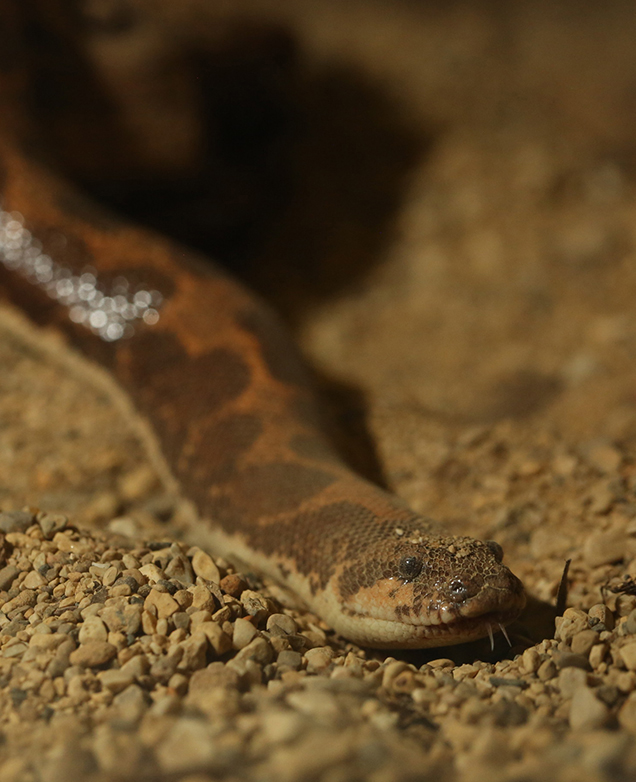
Difficulty: Beginner - Intermediate
- Size: Adults can be housed in a commercially available enclosure
- Low Humidity: This species does not do well in humid conditions
- Airflow: Ensure enclosure has adequate ventilation at all times
- Underground Ambush Predator: A fully buried snake can be challenging to feed and monitor health changes
Adult Size
- Male: 15 to 18 inches (0.38 to 0.45 meters)
- Female: 26 to 36 inches (0.66 to 0.91 meters)
Life Cycle
- Average Lifespan: 20-30 years
-
- Ovoviviparous - Egg sacs grow inside female, live birth
Enclosure Size
- Male: 24x18x12 inches
- Female: 36x18x12 inches
Husbandry Values
- Temperature:
- Ambient: 78-80°F (25.5-26.6°C)
- Basking: 90-95°F (32.2-35°C)
- The basking area should not exceed 95°F (35°C)
- Humidity: Avoid high humidity (>55%)
- Mist lightly or provide a humid hide while in shed
- Lighting: No specific requirements
- UV Light can be beneficial
Diet
- Carnivore: Rodents
Behavior Notes
- Burrower: This snake may burrow and completely bury itself
- Ambush predator: This species hunts by surprising and constricting its prey
***These care sheets assume that you understand the basics of snake care & husbandry.
If you are a new snake owner, it is recommended that you read our articles on general reptile care and then fine tune the requirements for the specific species you are interested in.
Habitat
The Kenyan Sand Boa is found in multiple countries in Northern and Eastern Africa, from Egypt south to Tanzania and east to Somalia. They are found in semi-arid deserts and savannahs. They spend much of their time buried in sand/soil and hidden in rocky outcroppings.
Feeding
This species is carnivorous and feeds on rodents. Feeding a rodent that is big around as the snake’s girth an average of once about every 7 days is a good rule of thumb to use here. Monitor the snake’s weight. As your snake reaches adulthood, you may feed less frequently to avoid obesity.
References
Photo Credit
- Banner- Athene cunicularia, creative commons. https://en.wikipedia.org/wiki/Erycinae#/media/File:Eryx_jaculus.jpg
- Article body- Lincoln Park Zoo https://www.lpzoo.org/animal/kenya-sand-boa/
